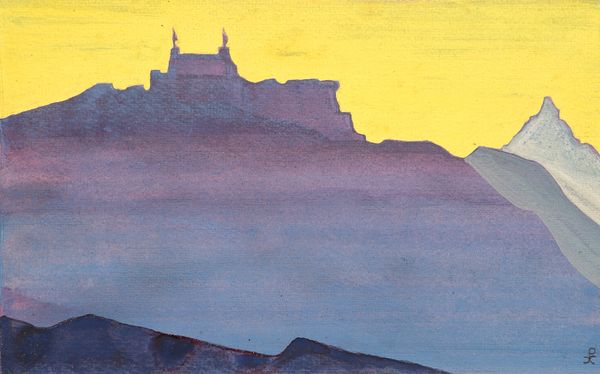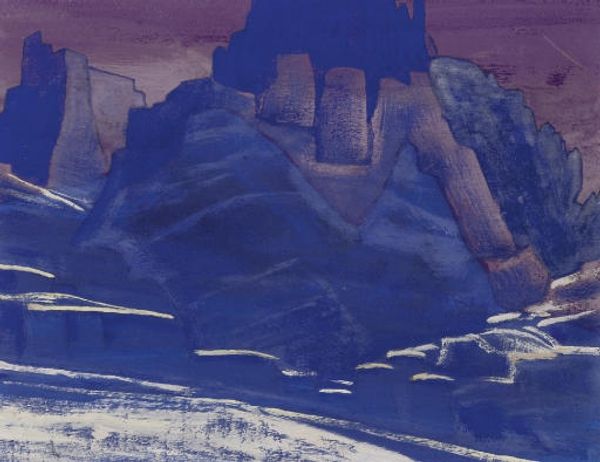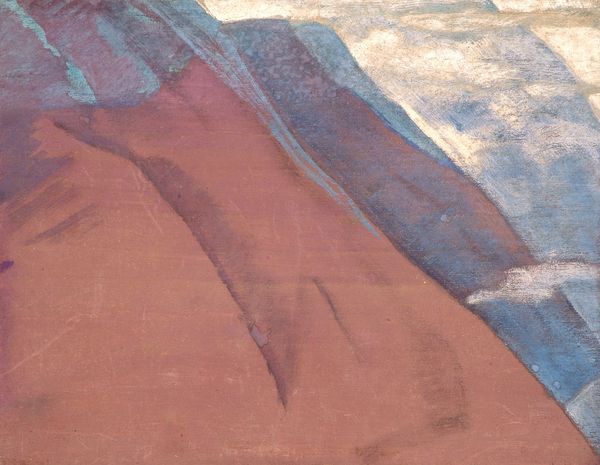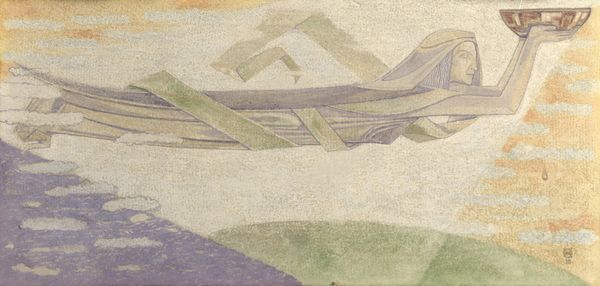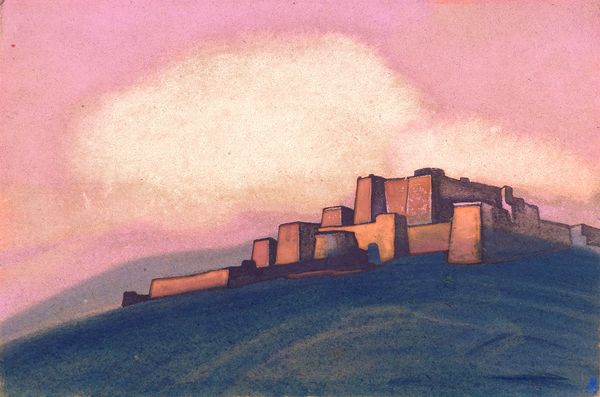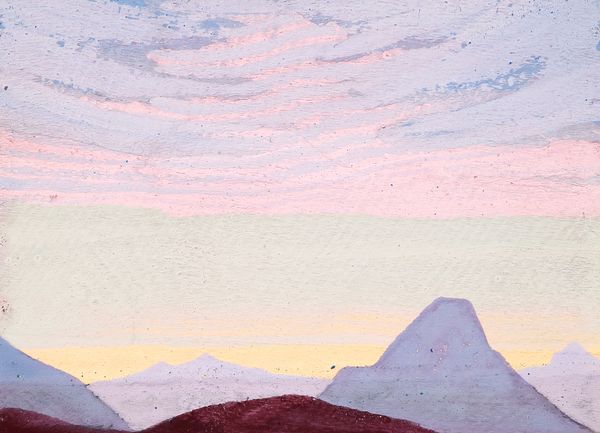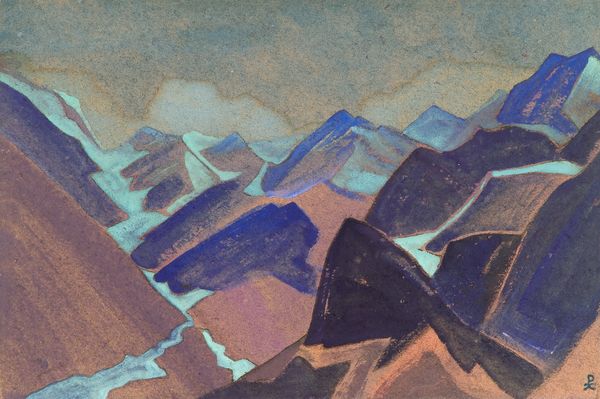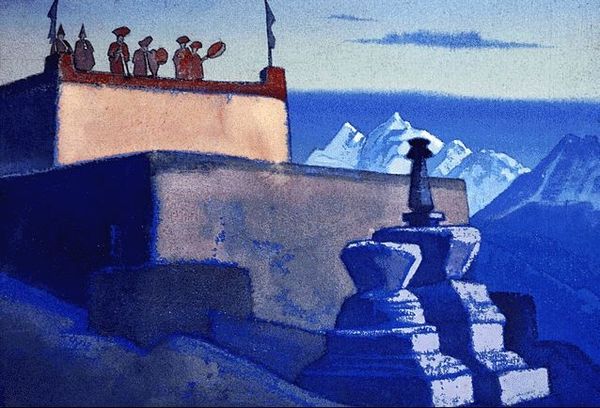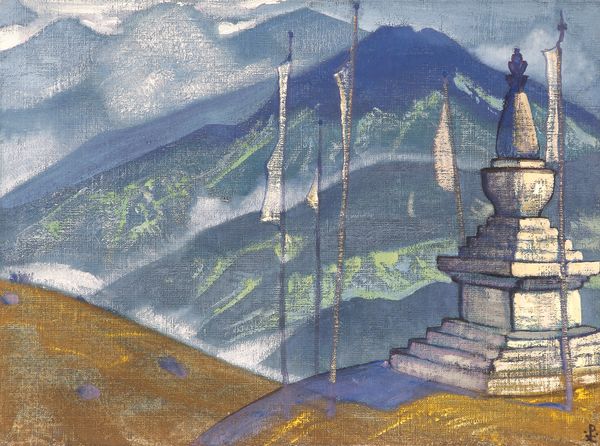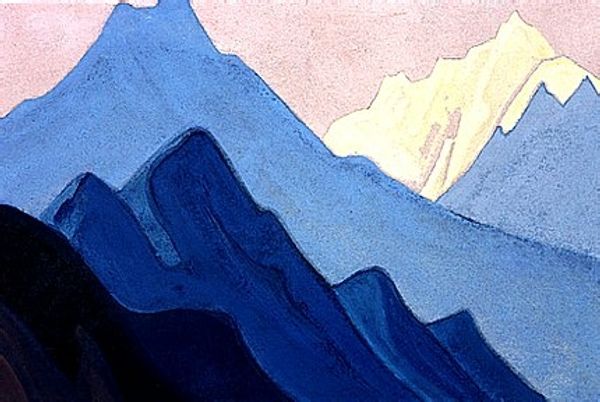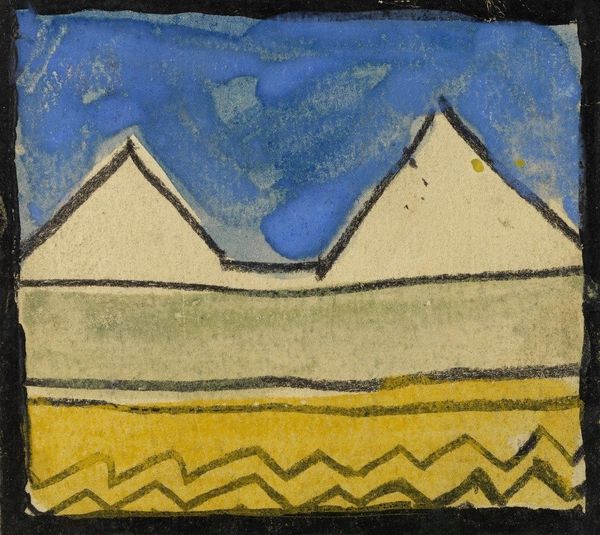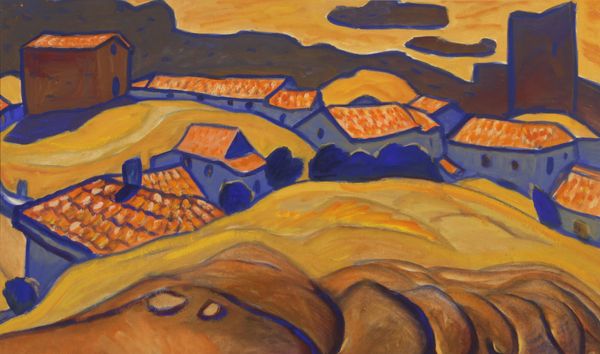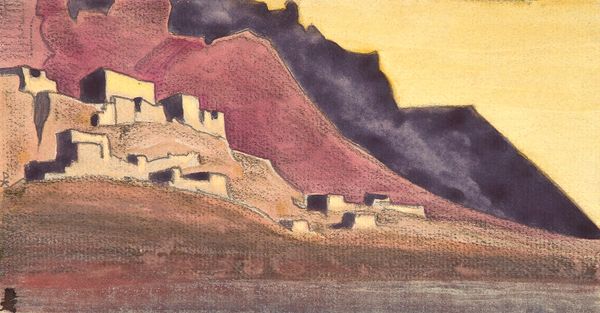
Copyright: Public domain
Curator: This painting is titled "Stupa near Sharugen," painted by Nicholas Roerich in 1928. He employed tempera on board to capture this scene. Editor: Immediately striking is the monumentality. The crisp, almost geometric rendering of the stupa dominates the composition despite being relatively small in the landscape. Curator: Roerich, a Theosophist, deeply intertwined his art with spiritual and cultural quests, particularly in Asia. This work reflects his journeys through Tibet and the Himalayas. These paintings served as visual documentation but also as spiritual statements about peace and the East's rich heritage, resonating with his utopian vision. Editor: I'm drawn to how he plays with light and shadow to define form. Note the use of contrasting colours and the simplicity of line – giving a sense of immovability, yet also otherworldliness. The horizon seems to almost blend into the sky. It lacks depth. Curator: Absolutely, and the choice of colours reinforces this. The muted blues and earth tones reflect the palette of Central Asia while imbuing the painting with a sense of solemnity. During this period, Orientalism in art often served political purposes, justifying colonial expansion. Editor: It does seem like Roerich aimed at presenting some authentic spirituality rather than promoting any empire's cause, which is interesting. Curator: Definitely. His pursuit was more aligned with preserving cultural memory and promoting understanding rather than imposing any specific cultural framework. His vision and ambition sometimes transcended those political constraints. Editor: Thinking about the structure now – the composition is severely divided between the flat horizon and monument versus a complete absence of anything beyond that. Its stillness is both captivating and unnerving. I suppose it is a visual echo of the spiritual isolation or the journey Roerich may have been feeling. Curator: Well, Roerich’s impact extends beyond the canvas. He proposed an international treaty for protecting cultural objects during wartime. He certainly aspired for his art to facilitate intercultural respect and appreciation. Editor: The lack of ornamentation and almost primitive geometric forms of that religious monument gives it that extra potency and almost unsettling power. A deceptively complex picture. Curator: Indeed, an evocative work layered with socio-political and spiritual considerations. Editor: And a powerful exercise in stripping back detail to emphasise monumentality and psychological impact.
Comments
No comments
Be the first to comment and join the conversation on the ultimate creative platform.
